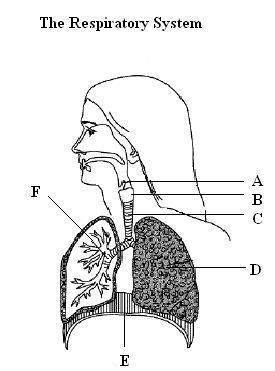Do your best to answer all the question that you can do for 100 points and brainlest.
if you p...

Biology, 24.11.2019 15:31 deandrehudson18
Do your best to answer all the question that you can do for 100 points and brainlest.
if you put too many wrong answers i will report you.
1.
which organ of the excretory system stores urine until the body is ready to eliminate it?
urethra
ureters
urinary bladder
urea
2.
louis pasteur demonstrated that killing organisms that cause a disease could
make a person sick with that disease
prevent the spread of that disease
be accomplished only with over-the-counter medications
be accomplished only with antibiotics
3.
lyme disease and rabies are both examples of diseases that can be spread by means of
infected animals
fungi
viruses
bacteria
4.
what is the main function of the excretory system?
to collect and remove wastes from the body
to strengthen skeletal muscles
to protect the nervous system
to bring oxygen to body cells
5.
where in the respiratory system does gas exchange occur?
in the pharynx
in the alveoli
in the trachea
in the heart
6.
the dome-shaped muscle that plays an important role in breathing is the
diaphragm
larynx
alveolus
bronchus
7.
use the diagram to answer the question.
which describes structure a?
the larynx, which is located at the top part of the trachea
the bronchi, which direct air into the lungs
the pharynx, which is part of both the respiratory and digestive systems
the epiglottis, which closes off the trachea when a person swallows
8.
hairlike structures that line the nasal cavities and trachea are called
cilia
capillaries
bronchi
mucus
9.
which is part of the inflammatory response?
lymphocytes destroy pathogens.
t cells distinguish pathogens.
white blood cells destroy pathogens.
b cells produce antibodies.
10.
oxygen and carbon dioxide are exchanged in capillaries that surround tiny sacs called
larynx
bronchi
alveoli
trachea
11.
use the diagram to answer the question.
what is structure c?
bronchi
larynx
trachea
epiglottis
12.
in which excretory organ is urea produced?
kidneys
liver
lungs
skin
13.
organs of excretion that maintain homeostasis include the kidneys, lungs, skin, and
bronchus
diaphragm
liver
bladder
14.
pathogens known as must get inside living cells to reproduce.
bacteria
viruses
protists
fungi
15.
during gas exchange, which substance moves from the alveoli into the blood?
water
oxygen
carbon dioxide
nitrogen


Answers: 3


Another question on Biology

Biology, 22.06.2019 02:00
What is the difference between an igneous, sedimentary and metamorphic rock
Answers: 1

Biology, 22.06.2019 06:30
Step 1 review the imaginary strand of dna below. note the complementary base pairs. a g c a a t c c g t c t t g g t c g t t a g g c a g a a c c step 2 to begin replicating this strand of dna, draw the two sides of the strand separating. step 3 now, draw the free-floating bases linking up with the separate sides. remember to follow the rules of complementary base pairing. step 4 draw the two resulting dna strands.
Answers: 1

Biology, 22.06.2019 06:40
Select all that apply. why are common names not a good reference to a species? common names can be in different languages common names vary with location common names vary with culture common names vary with species color
Answers: 1

Biology, 22.06.2019 08:30
Which of the following is a true statement? a. individuals evolve to have adaptations. b. individuals have adaptations that can change over time. c. individuals have traits that may or may not make them successful at reproduction. d. populations cant evolve, only individual organisms.
Answers: 1
You know the right answer?
Questions







Computers and Technology, 17.05.2020 21:57


Mathematics, 17.05.2020 21:57

Mathematics, 17.05.2020 21:57

Mathematics, 17.05.2020 21:57


Mathematics, 17.05.2020 21:57

Biology, 17.05.2020 21:57






Computers and Technology, 17.05.2020 21:57




